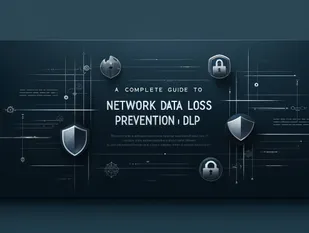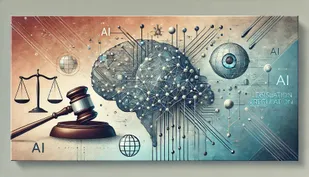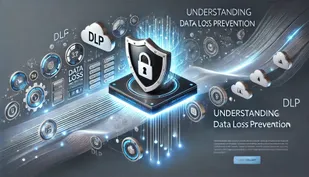
Imagine a world where developers wield a superpower—one that lets them foresee bugs before they even appear in the code. 🔮✨ This visionary concept takes software development beyond its current boundaries, promising a dramatic transformation in how we approach coding, testing, and teamwork. If this power were within your grasp, the ripple effects would touch every aspect of the software development lifecycle, making it a game-changer in the truest sense.
The Power of Foresight: A New Chapter in Development 🚀💡
-
Transforming Coding Practices: With the ability to foresee bugs, developers would shift from reactive problem-solving to proactive code crafting. 🛠️ Instead of rushing to squash bugs post-release, you’d design code with foresight, preemptively smoothing out potential issues. Imagine writing each line of code, knowing exactly where things might go wrong and preventing it before it happens. This proactive approach would result in cleaner, more reliable, and far more maintainable codebases. 📜✨
-
Elevating Code Quality: Cleaner code isn’t just about reducing errors—it’s about building a foundation that lasts. 🧱🔧 When bugs are seen before they’re born, technical debt becomes a relic of the past, and your projects grow stronger and more resilient. This leads to code that’s easier to maintain and extend, making future updates and new features smoother and more seamless. 🌐
-
Speeding Up Development Cycles: Time-consuming bug fixes would become a rarity. ⏳ Without the constant need to debug and troubleshoot, development would speed up, allowing teams to focus on innovation and delivering features that truly wow users. The result? Faster releases, happier clients, and a team that’s always ahead of schedule. 🕒💨
-
Crafting a Flawless User Experience: With fewer bugs to battle, more time could be devoted to perfecting the user experience. 🖌️ Instead of firefighting issues, developers could dive into the finer details of UI/UX, ensuring that every interaction is smooth, intuitive, and delightful. The end product wouldn’t just be functional; it would be a joy to use. 🎨❤️
The Future of Testing: From Bug Detection to Bug Prevention 🔍✅
-
Revolutionizing Testing Focus: Testing would no longer be just about catching bugs—it would evolve into a sophisticated process of validating that foresight was correct. 🚦 Imagine running tests designed not only to find errors but to ensure that anticipated issues never come to fruition. This would lead to more advanced and reliable testing strategies, setting new industry standards. 📈
-
Empowering Developers with Predictive Tools: IDEs and other development tools would become your co-pilots, using AI and machine learning to predict bugs as you code. 🧠💻 Picture an IDE that highlights potential issues in real-time, offering smart suggestions to prevent bugs from emerging. It’s like having a crystal ball that guides your every keystroke. 🔮
-
Seamless Continuous Integration & Delivery: CI/CD pipelines would become almost flawless, thanks to foresight-driven development. 🚀 Deployment processes would be smoother, with automated tests verifying not just functionality but also the absence of anticipated bugs. This would make every release more stable and secure, building user trust and satisfaction. 🌟
-
Fortified Security Practices: Security vulnerabilities would be identified and resolved long before they could be exploited. 🛡️🔒 With the ability to predict where security issues might arise, developers could embed robust security measures directly into the code, reducing the need for post-release patches and making applications inherently safer. 🔐
Collaborative Synergy: Strengthening Teams and Innovation 🤝💪
-
Enhancing Team Collaboration: Foreseeing bugs would bring teams closer together. 🌍 Developers would share insights on potential issues, fostering a culture of collaboration and shared responsibility. Code reviews would transform from bug hunts into strategic discussions on avoiding future pitfalls, making the development process more cooperative and unified. 🤝✨
-
Maximizing Pair Programming: Pair programming would take on new significance. Two minds working together, with the shared power of foresight, would create stronger, more resilient code. 💻👥 It would also facilitate knowledge transfer, with experienced developers mentoring others on the art of anticipating and avoiding bugs, resulting in a more skilled and cohesive team. 📚
-
Strategic Project Management: Project timelines would become more predictable and reliable, as the risk of unforeseen bugs would diminish. 📅 With fewer surprises, teams could deliver on time and within budget, boosting client confidence and satisfaction. 🎯 The reduction in emergency fixes would allow for a more strategic approach to development, focusing on innovation and long-term goals. 🌐
-
Cross-Disciplinary Innovation: Foresight into potential bugs would encourage collaboration across disciplines. 🌟 Developers, UX designers, product managers, and data analysts would work together to preemptively address issues that could affect user experience or data integrity, resulting in more polished and holistic products. 💼
The Ripple Effect: A New Standard in Software Quality 🏆🌍
-
Setting a New Benchmark for Excellence: As the ability to foresee and prevent bugs becomes the norm, software quality standards would rise. 🏅 Users would expect flawless, bug-free experiences, and developers would take pride in delivering software that not only meets but exceeds these expectations. 🌟
-
Evolving Development Methodologies: With this new capability, agile practices and other methodologies would evolve, incorporating foresight exercises into planning and retrospectives. 📊 This would result in even more efficient and effective development processes, capable of delivering high-quality software in a dynamic and fast-paced environment. 🌀
-
Pioneering Developer Education: As foresight becomes a critical skill, developer education would shift to include training on recognizing and preventing common bug patterns. 🎓 Universities and bootcamps would offer courses focused on this new skill, creating a generation of developers equipped to write more resilient and reliable code from day one. 📘
-
Long-Term Cost Efficiency: By preventing bugs before they occur, companies would save on post-release maintenance and support costs. 💰 The reduced need for patches and updates would free up resources for innovation, enabling businesses to reinvest in growth and continue pushing the boundaries of what’s possible in software development. 📈
Conclusion: Elevating Software Development to New Heights 🚀✨
The ability to foresee bugs before they happen would revolutionize software development, transforming it from a reactive to a proactive discipline. It would lead to cleaner codebases, faster development cycles, and a higher standard of software quality. Teams would collaborate more effectively, testing would become more advanced, and the user experience would reach new levels of excellence. Ultimately, this foresight would elevate the entire field of software development, creating a future where software is not just functional, but flawless. 🌟💻
This vision of a world where developers can see and prevent bugs before they happen might seem like a dream, but it challenges us to think about the future of software development in a new light. While perfect foresight may remain out of reach, the pursuit of excellence in coding, testing, and collaboration is an achievable goal that will continue to drive innovation and success in our industry. 🛠️🌐








